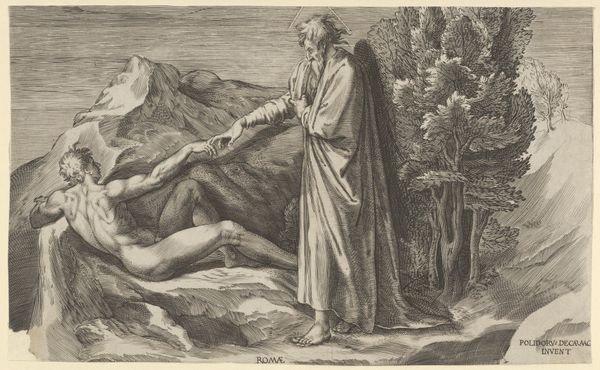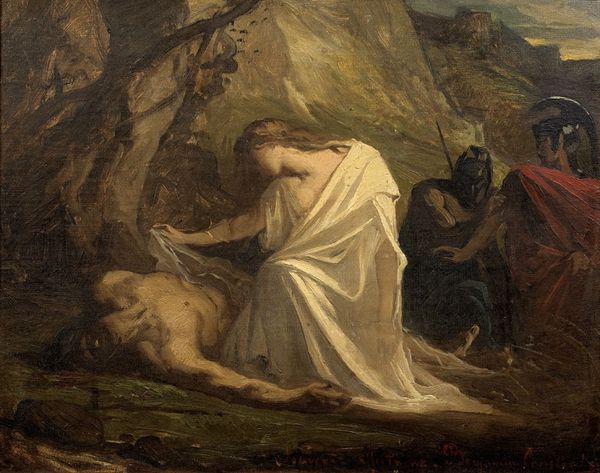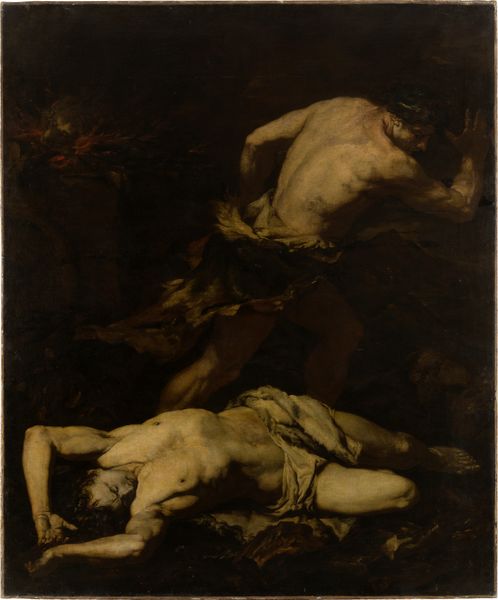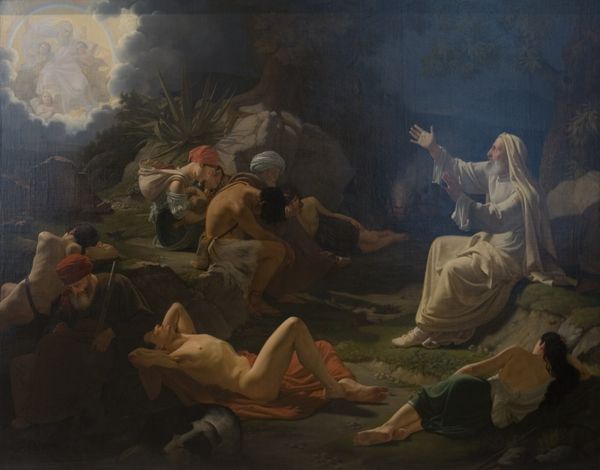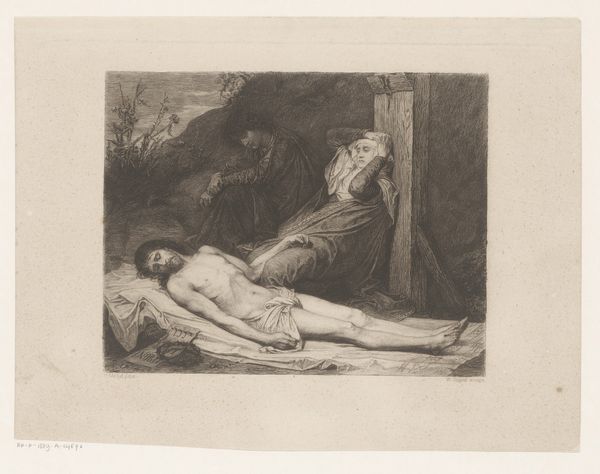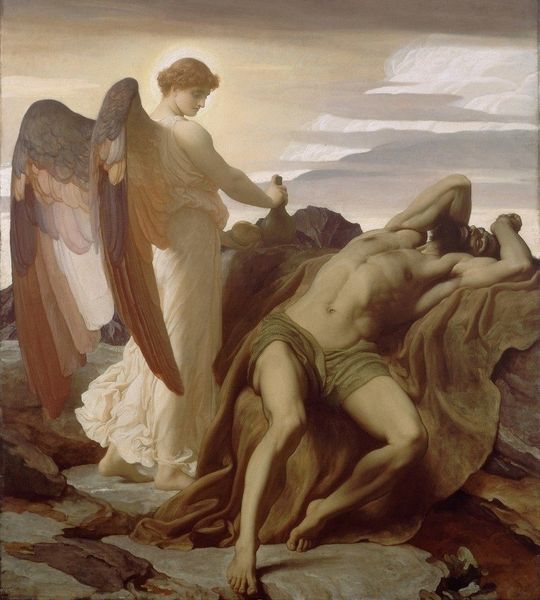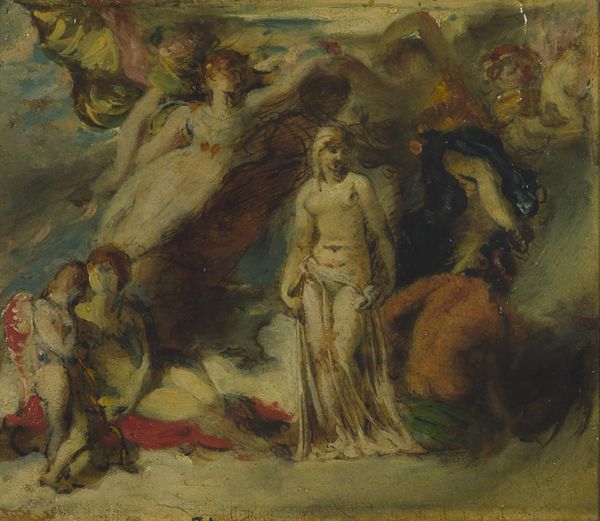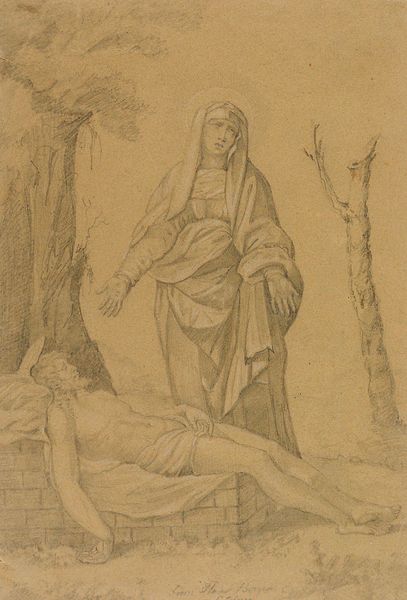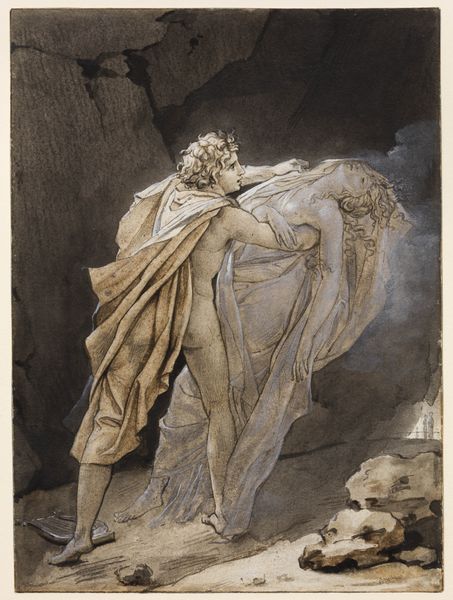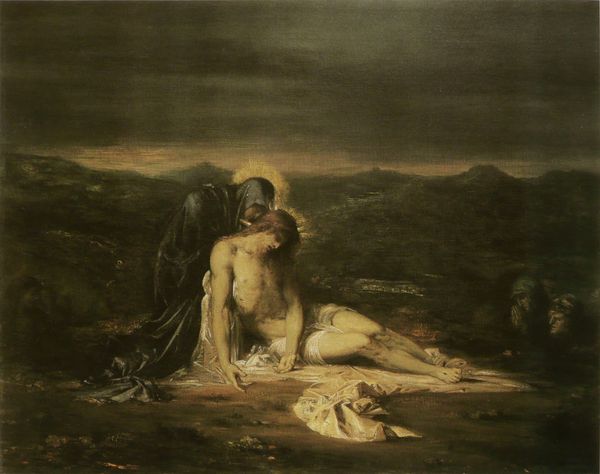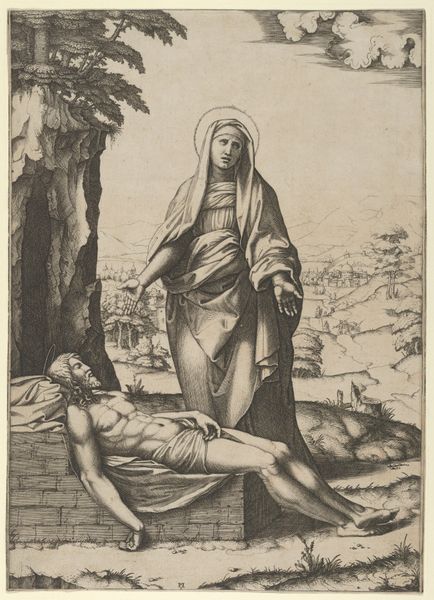
Antigone Gives Token Burial to the Body of Her Brother Polynices 1835 - 1898
0:00
0:00
Dimensions: 10 13/16 x 13 7/8 in. (27.4 x 35.3 cm)
Copyright: Public Domain
Editor: This is Jules-Eugène Lenepveu’s “Antigone Gives Token Burial to the Body of Her Brother Polynices,” dating from 1835-1898, made with watercolor, charcoal, and other drawing media. It's quite striking, somber even. The loose lines almost feel unfinished, yet the story is so clear. What's your take on this, seeing it from a different perspective? Curator: It's fascinating to consider this piece in terms of production. Lenepveu’s choice of watercolor and charcoal – readily available, relatively inexpensive materials – speaks volumes. Watercolor, often associated with preliminary sketches or studies, undermines the grand historical narrative it depicts. What does this say about the intended audience and function of such a piece? Editor: I see what you mean. Watercolor does feel more like a sketch. So was he challenging the typical heroic style? Curator: Precisely! This isn't oil paint on a massive canvas destined for a palace. This choice emphasizes the accessibility, potentially even disposability, of the image. Think about the rising print culture in France at the time. This might have been conceived as reproductive design, circulated for mass consumption rather than a unique high-art object. Editor: Oh, I hadn’t considered that! The accessibility makes the story itself more important than, say, the artist’s virtuosity. Was the myth of Antigone used politically in that era? Curator: Absolutely! This story, concerning duty to family versus obedience to the state, held resonance for audiences navigating revolutionary and post-revolutionary political landscapes in France. This piece reduces mythology to human struggles shaped by raw materials. It democratizes tragic narratives by making art reproducible. Editor: So it's not just the image but also how it was made and shared that carries meaning. It shifts our understanding of high and low art, which is interesting given the subject matter of mythology. Curator: Exactly! Considering artistic production reveals layers of social, political, and economic context that reframe traditional interpretations. Editor: This makes me appreciate the artwork a lot more. Thanks! Curator: My pleasure! It is all about digging under the surface and figuring out the meaning of material.
Comments
No comments
Be the first to comment and join the conversation on the ultimate creative platform.
